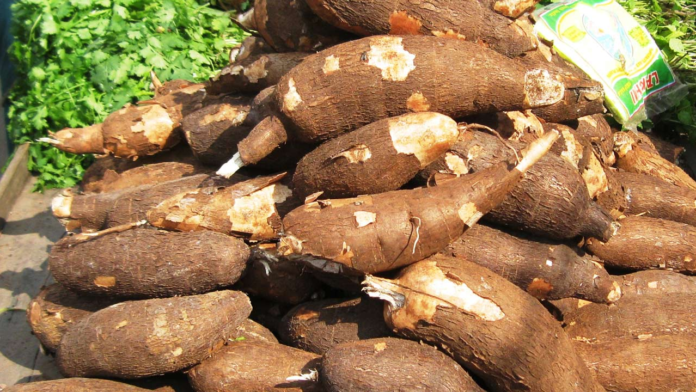By Kirsten Okenwa
Every year on June 28, we celebrate World Cassava Day. Cassava is a versatile and vital root vegetable that provides food security for millions around the world. From Africa, to Asia, and Latin America, cassava is an important source of nutrition for healthy living.
As a child, I was fascinated by the importance my grandma placed on cassava farming. Leading a group of village women to the Better Life for Rural Women agricultural events organized by the late First Lady of Nigeria, Mrs Maryam Babangida, local women were taught and empowered in cassava farming. When they returned from these events, grandma inundated us with stories of new varieties of cassava that can provide economic value, and poverty reduction for many rural women. It wasn’t just talk; grandma and her gang of industrious women planted this wonder root-tuber cassava and got lots of profits from it.
As we go back to our roots by joining millions to grow this drought-tolerant root crop that is capable of thriving in any kind of soil, let us remember that we are contributing to the sustenance of many people not just in our country, but around the world.
Back to our roots: Why we should grow cassava:
- Highly profitable crop. Cassava is more profitable than maize. The gross margins per hector of Cassava is three times higher than that of maize.
- Ready Market. Cassava is very easy to sell. The domestic market is huge. Cassava is also used for industrial purposes like in baking, making of cardboards, packaging materials, beer, starch, glue, and many more. Therefore, the market for both cassava chips and flour is huge.
- Cassava is drought resistant compared to maize, making it good for household and national food security.
- Cassava is easy to store. The crop can be harvested only as needs arise. The surplus can be stored underground thereby resulting in low post harvest losses.
- The crop is disease resistant. No need for insecticides, thus cheaper and easy to manage.
- Cassava can grow almost everywhere, regardless of the soil fertility.
- Multiple uses. All parts of the plant are useful. Leaves can be used for vegetables, stems are used for planting, roots or tubers can be used to make flour, chips, or can be eaten raw.
- Widely consumed in many African regions countries. Staple food in many regions.
- Can be processed using the most basic or natural methods like just soaking, sun drying and pounding.
- Huge demand for both domestic and industrial use.
- Can be inter-cropped with other crops like millet, groundnuts and beans.
- Does not require any chemical fertilizers, making it cheaper to grow.
- Rich source of starch and carbohydrates, making it a good security crop.
- Complementarity. Cassava can be consumed together or mixed with other crops. Tastes super with groundnuts, beans. Cassava floor mixed with maize meal tastes better.
- Huge potential for commercialisation. Cassava can easily or will soon be a commercial crop given its multiple industrial uses like the making of starch, flour, beer etc.
- Nutritious. Cassava leaves are nutritious with some medicinal properties.
Let’s join in making cassava the next major export commodity from Nigeria.
Kirsten Okenwa is an Industrial Chemist, Food Systems and Agriculture expert.





